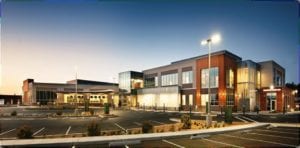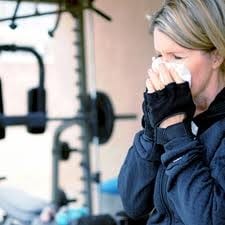
Urgent Care Startup Location: Gym Facilities
April 13, 2016
An increasing number of urgent care centers are popping up in close proximity to health clubs and gym facilities.
In Frisco, Texas, Baylor University Medical Center has opened an urgent care center inside of Fieldhouse USA. Baylor’s Urgent Care Center–Sports Village location offers diagnosis and treatment for minor conditions such as sprains and strains, minor fractures, cuts, muscle aches, and even nebulizer treatments for allergies or asthma. The facility inside the massive indoor sports complex, that hosts hundreds of youth leagues, is open from noon to 10 p.m. Monday through Saturday, and from 8 a.m. to 6 p.m. on Sundays.
“Our professional urgent care staff can refer patients to a specialty physician, primary care physician, or even our on-site emergency room if necessary,” according to the website.

The Peninsula Wellness Center in California includes urgent care and a medical wellness center. PHOTO PROVIDED
Another model, seen in California, is the Peninsula Wellness Center. The facility includes urgent care and a medical fitness center, along with doctors’ offices, cardiac rehab, an imaging center, diabetic care, and physical therapy. This approach leverages the urgent care and the fitness centers as part of the overall strategy of the health system.
“Hospital systems in their strategic plans are moving services away from one main hospital and reaching out to communities with these types of wellness centers,” said Lynn Robbins, Vice President of HealthPlex Associates, which manages and helped develop the Peninsula Wellness Center.
“Urgent care is part of the strategy because in a lot of places urgent care is replacing going to a regular physician,” she added. “But this draws those patients into your system, so you’re not bleeding them to an urgent care facility in another community.”
The advantages of co-locating urgent care alongside sports venues or gym facilities include:
But there are also some potential pitfalls to the approach. The urgent care model relies on easy access. If an urgent care facility is located in a sports club with heavy traffic during peak hours, like first thing in the morning and the 4-8 p.m. time block, parking issues could deter potential patients.
Similarly, employees may balk at using urgent care facilities for occupational medicine (for physicals and drug screens) if access is a hassle. This issue could be avoided, however, if the urgent care center is given dedicated parking spots.
Another potential concern lies in past trends in urgent care visits. Is it wise to pick a location strategy based on drawing sports medicine when it’s historically only made up about 10 percent of urgent care visits?  There is a potential, however, to draw more of these patients into your facility for higher acuity conditions.
There is a potential, however, to draw more of these patients into your facility for higher acuity conditions.
And a final consideration is this: How will health club patrons feel about the proximity to the sick patients visiting urgent care?
Robbins said gym facilities haven’t been wildly successful in medical complexes since the inception about two decades ago. The difference now, she said, is that the health clubs are being designed on a smaller scale – no longer including amenities like climbing walls or racquetball courts, because the membership base for that model was not sustainable. The health centers now only fill 30,000 or 40,000 square feet of space.
“What we’re seeing now in most cases are true medically-based wellness centers,” Robbins said. “On the fitness side, we’re trying to keep people healthy, whether it’s a 60-year-old male who has not been active and has a heart condition or is overweight and needs hip or knee surgery. They’ll go in and do pre-surgery exercise.”
These wellness center gym facilities aren’t meant to compete with the Anytime Fitness model for inexpensive access to a treadmill or elliptical machine. But in many cases, Robbins said the hospital wants to sponsor such a facility as a showcase in the community.
Need help with your urgent care startup? Download our eBook on most frequently asked startup questions. No form fill required!
Download Most Frequently Asked Questions by Urgent Care Startups
Join over 20,000 healthcare professionals who receive our monthly newsletter.